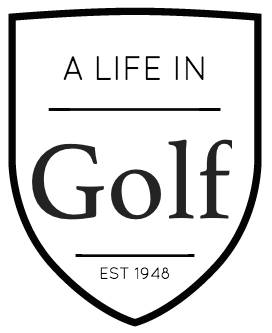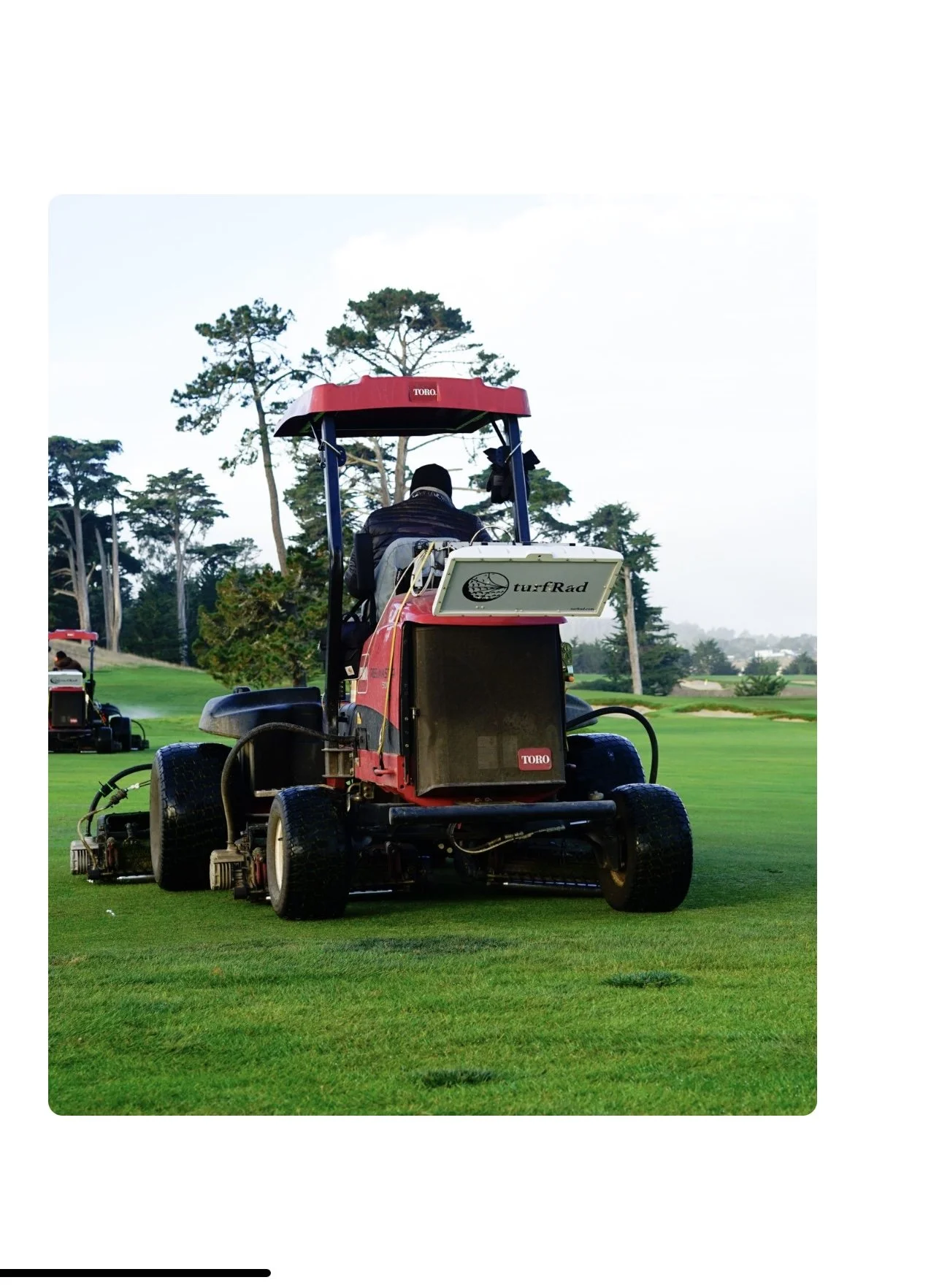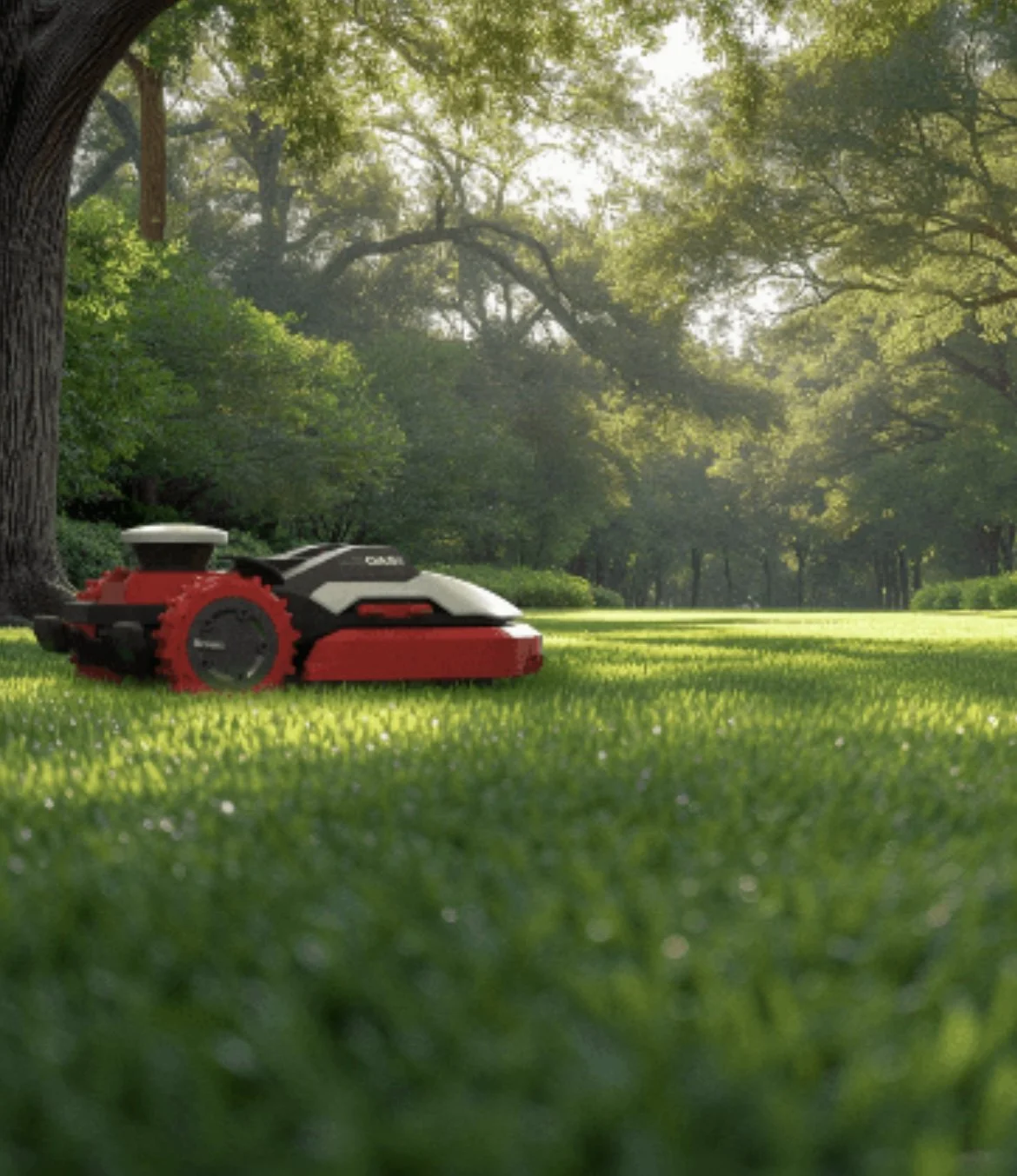Technology Invades Course Maintenance
TurfRad Attached To Toro Mower
Golf course maintenance is undergoing a remarkable transformation. Today’s crews are as comfortable with tablets and turf sensors as they are with mowers and rakes. Advances in equipment, data-driven decision making, and cutting-edge technology have revolutionized the superintendent’s toolkit—elevating turf quality and redefining how the game is played.
With the growth in golf the past decade, the Toro Companies, a major player in golf course irrigation and maintenance, has made significant investments in the game. “We started with the areas that are the most labor intensive and where we can have the greatest effect on course budgets,” said Jeffrey Ische, Senior Manager of Product Marketing for Toro and former golf course superintendent. “It’s the reason we are in autonomous mowing. We started by developing autonomous fairway mowing.”
Directed by GPS from satellites, autonomous fairway mowing works well. Under a tree canopy, thus off the fairway, mowing is more challenging as the signal can get interrupted by the trees. Smaller “low energy” units work, but must be located near a docking station to recharge, which requires power. Thus smaller units are seen in the area of the clubhouse or other areas on the course that has nearby power. The larger fairway units are gas or battery powered.
I met with Brian Boll, superintendent at Interlachen Country Club in Edina, MN, surrounded by more than a million dollars worth of maintenance equipment. Gone are the days of pulling a gang mower behind a tractor to cut the rough and riding a few triplex mowers to cut the fairways and greens. “We have challenges getting enough labor. We have to make our golf operations more efficient,” said Boll. “Autonomous mowing allows us to reallocate labor to other areas. Autonomous mowing is safer and more efficient.”
Interlachen is now autonomously mowing fairways while other courses with few trees are expanding to roughs, all with no operator. Following GPS coordinates the units cut designated areas.
“I set up the boundaries for the mower,” said Sully, a computer skilled member of the crew at Interlachen. “I map where it will mow, turn, and where not to go. I turn it lose and move to the next fairway. On my phone, I can see how fast the mower is going, how much longer it will take to finish the current fairway and direct it to where to go next. When it’s done with a fairway it sends me a text asking if the next fairway is ready,” said the 28 year old Sully. “It creates a precise and consistent clean up lap around the perimeter. A machine operator will be inconsistent.”
At Braemar Golf Course, a public facility in Edina, MN, superintendent Jeff Mold will be cutting all of the roughs with autonomous Kress mowers in 2026. “We have ten units that we have purchased. Each one will cut about three and a half acres with about a 12” cut,” said Jeff. “They will dock and recharge near irrigation boxes where there is power. We will cut the rough nearly every day. You can lower the height of cut to handle the fairways, but we are not ready to do that yet.” There are few trees at Braemar thus allowing the GPS satellite system to work. “I am able to reallocate about three people to other areas of the facility, like over at the par three course.”
“I need a baseline of technology skills for new employees that was never required before,” said Brian Boll. “Often individuals don’t realize they have the skills to work in turf management. Computer skills translate into our industry.”
“We have sensors in the ground measuring the soil temperature and oxygen content throughout the winter,” said Boll. “We are now getting technology support to tell us how to gather and use the data. When we see the data we can act on it, like if we see a drop in the oxygen and need to take action. In the past we would have to use a “best guess” as to when we should do something.”
In all aspects of golf course maintenance, technology is allowing the superintendent to deliver better turf for the player. We have miles of drainage on the course,” said Boll. “When we go out to dig for some reason, we have GPS coordinates to tell us where drainage and irrigation lines are. It’s crucial, because if we accidentally cut irrigation wires, there could be 85 wires that need to be fixed. We can pull up irrigation maps on our phone out in the field.”
“The sprayers have auto steering,” Jeffrey Ische explained to me. “They are less reliant on the operator, save money on chemicals by turning the nozzles on and off and auto steering for the next pass. There are elevated expectations of the superintendent and we want to help with that.”
And it’s not just the superintendent that is benefitting. Autonomous ball pickers for the driving range have recently gone on the market. “It picks up the balls and a delivers them to the washing areas,” said Ische.
Game changing technology has recently been unveiled by Toro. With their partner, TurfRad, a Swiss company, their product measures the microwaves emitted from the soil to measure moisture content in the soil. Subsoil moisture can be measured up to three inches deep.
The TurfRad equipment measures the moisture in the soil and sends the information to a computer back at the office of the superintendent. The computer then adjusts each of Interlachen’s 700 plus irrigation heads for how much water they will put out the next time the system runs, taking into account the weather since the last previous reading. Remarkable.
“Superintendents manage moisture to a number,” said John Dahlman, Senior Product Manager at Toro. “The TerraRad measures the soil moisture, sends it to the computer, the program adjusts each irrigation head so that the irrigation system will distribute more or less water from each head. They can manage to a number. The system changes the future moisture level to the target number. There is more precision in how much water is applied.”
“We can generally see where an area is too dry,” said Brian Boll. “It’s the areas that are currently getting too much water that you can’t see. The grass looks good, so you don’t change anything.”
“There is a savings in water because the areas that are getting too much water get cut back,” said Dahlman. “In addition, to take care of the dry spots you run a hose. How much water is too much or not enough on those spots? The superintendents are always surprised at how uniform the playing conditions are.”
Testament to how fast change is happening, microwave measurement of soil moisture has been available for a few years. However the data collection and distribution of that data has only recently been possible by computer program. Until today the superintendent would have to manually adjust each of the irrigation heads from the data collected. The new Toro/TerraRad software makes it all computer driven.
Brian Horgan holds a PHD in Natural Resources and Environment and is currently the Dean of the College of Agriculture, Food and Environmental Science at UC San Luis Obispo. Being a research scientist, Brian looks to the future. “About every 20 years a course will do a major or minor renovation. What can they do today to prepare for that next project? Irrigation improves every year. What will it be like in ten years? How can we prepare for autonomous mowing or the next change in mowing equipment? Right now people are looking at mowing with lasers. There is a farmer here that is using lasers to kill weeds in his field. The equipment senses a weed and zaps it!”
“New grasses have been developed that use less water, less fertilizer, are more disease resistant along with more cold and warm weather tolerable. Research is being done now on slow growth grasses,” said Brian. “When a course is looking to re grass, they should not look down the street to see what (grass) people used five or ten years ago. Every year there are better grasses, better varieties, more resilient, able to withstand stress.”
“We’re working to make the superintendent’s job easier,” said Jeff Ische. “We’re working on software to make equipment tracking easier, diagnose equipment issues and track productivity of labor.”
The boom in golf in the current decade has spurred companies like Toro to invest in the industry, resulting in terrific new products to make playing conditions better, using less water with more efficient use of labor. The job superintendents are doing using technology has dramatically improved in A Life In Golf.
Kress Autonomous Mower
TurfRad Attached To A Toro Mower






